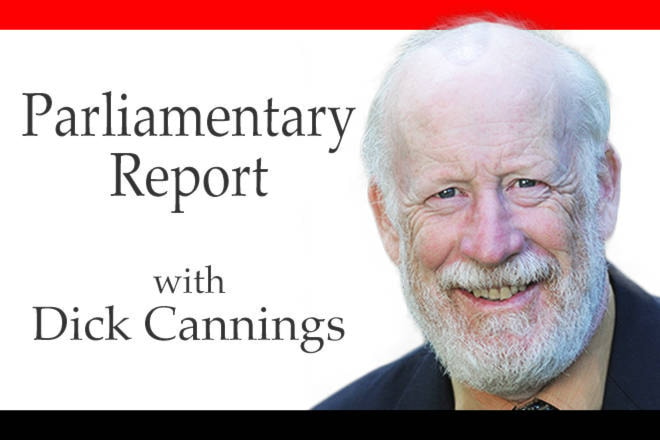I recently attended the annual Council of Forest Industries (COFI) convention in Vancouver, getting the usual updates on the economic outlook for the B.C. forest industry.
COFI also provides a great opportunity to meet many of the mayors, town councillors and regional district representatives from my riding. We talked a lot about the softwood lumber negotiations and the prospect of “shock and awe” duties and quotas that might be levied on Canadian exports in the coming weeks.
Government and industry representatives are working to diversify our forest product markets so that we are not so dependent on American sales. Economists at the COFI meeting discussed in detail the prospects for increased sales to China (Russian competition seems to be overwhelming) and India. But the keynote speaker, Michael Green, really caught my ear.
Michael Green is a Vancouver architect who has pioneered techniques in constructing large buildings out of wood instead of the usual mix of steel and concrete. Because of his work, and the strong growth of companies such as Penticton’s Structurlam, Canada is a real world leader in this field.
I was particularly interested in Michael Green’s presentation because, coincidentally, I introduced a private member’s bill into the House of Commons last Thursday (April 13) on this subject. If passed, this bill would mandate the government to consider using wood when planning new federal buildings. We need this directive for government, since the technologies used in large wood buildings are new, and many architects and construction companies prefer to go with familiar steel and concrete structures.
Related: Cannings introduces bill to support use of wood construction
If more large buildings are designed with wood in mind, the benefits for the Canadian forest industry are obvious. The market is so big that if wood managed to secure even a small portion of it, there would be a significant boost to domestic timber sales. However, there are other good reasons to use wood in buildings.
One is the immediate reduction in greenhouse gas emissions. While the concrete and steel industries emit a lot of carbon dioxide, wood products are storehouses of carbon.
Another advantage is that wood buildings are built in modular fashion — beams and panels are made in factories while the building site is prepared, then quickly assembled. Brock Commons, the world’s tallest mass wood building at 18-storeys, was built on site at UBC with materials made by Structurlam in Okanagan Falls. At a rate of three days per floor, the skyscraper took only eight weeks to build.
Related: Penticton company beaming with pride
There are some concerns about the mass use of wood in large buildings. The obvious one is fire safety, but mass wood proponents immediately point out that the huge beams and heavy wall units act very differently than the wood in timber frame buildings. A char layer quickly forms on the thick wood, greatly slowing the spread of fire and allowing the same escape times experienced in concrete and steel buildings. For extra safety, the wood panels can be lined with fire-resistant drywall.
The move to constructing large buildings with wood is happening quickly, and Canada is fortunate to be on the leading edge. A boost from government procurement would keep us there.
Richard Cannings is the Member of Parliament for the South Okanagan-West Kootenay riding and the NDP Natural Resources critic. He can be reached via email at richard.cannings@parl.gc.ca. Cannings is also on Twitter @dickcannings and on Facebook @RichardjCannings
